
You’ve heard the promises. A regular meditation practice can sharpen your focus, calm your anxiety, and help you navigate the chaos of modern life with a little more grace. You’ve downloaded the apps, bought the cushion, and set the alarm for an early-morning session. For a few days, it even works. You feel a flicker of the promised peace.
And then, life happens. A stressful deadline at work, a sleepless night, or just the overwhelming inertia of your existing routine. The cushion gathers dust. The app notifications go ignored. You tell yourself you’ll start again on Monday, but Monday comes and goes. The attempt ends not with a bang, but with a quiet sense of failure and the nagging thought: Why can’t I just stick with it?
If this sounds familiar, especially for those of us living and working in busy urban environments, you are not alone. Our brains are constantly bombarded with stimuli, from the ping of a new email to the siren wailing down the street. In this state of perpetual low-grade alert, the idea of sitting in silence can feel less like a relief and more like an impossible task. We blame our lack of willpower or discipline, but the truth is, willpower is a notoriously unreliable resource. It’s like a muscle that gets tired with overuse. Relying on it to build a new habit is like trying to hold back the ocean with a bucket.
There is a better way. A gentler, more effective path to building a meditation habit that lasts. It doesn’t involve gritting your teeth or forcing yourself into long, uncomfortable sessions. The secret isn’t about more effort; it’s about better strategy. It’s about understanding the simple mechanics of how habits work and designing a system that works with your brain, not against it. This article will show you how to build a durable mindfulness practice through tiny, consistent, and compassionate steps. No burnout required.
📚 Table of Contents
- The Science of Lasting Habits: Your Brain’s Operating Manual
- Designing Your Meditation Practice: The Architecture of Consistency
- Start with a Minimum Viable Action
- Conduct a Friction Audit
- Design Your Cues and Environment
- Embrace Gentle Accountability
- Safeguarding Your Habit: How to Handle Inevitable Imperfection
- Plan for Relapse: The “If-Then” Strategy
- Rethink the Streak: The “Never Miss Twice” Rule
- Reset Without Shame
- Putting It All Together: Two Sample Meditation Routines
- Frequently Asked Questions About Building a Meditation Habit
- How long does it really take to form a meditation habit?
- What should I do on days when I’m traveling or sick?
- My mind is so busy and I feel like I’m failing. What can I do?
- I’ve been consistent for a while, but I feel like I’ve hit a plateau. How can I go deeper?
- Is it a good idea to try to build other new habits at the same time?
- Your First Month of Mindful Consistency

The Science of Lasting Habits: Your Brain’s Operating Manual
Before we can build a new habit, we need to understand the blueprint our brains already use to run our lives. Most of our daily actions, from brushing our teeth to checking our phones, are not conscious decisions. They are habits, running on autopilot. Understanding this automatic process is the first step to consciously creating a new one, like meditation. The two core concepts you need are the habit loop and identity-based habits.

The Habit Loop: Cue, Action, Reward
Think about the first thing you do when you get in your car. You likely put on your seatbelt without a second thought. This automatic behavior is governed by what behavior scientists call the habit loop. It’s a simple, three-step neurological pattern that is the foundation of every habit you have. In plain English, the steps are:
1. The Cue: This is the trigger that tells your brain to go into automatic mode and which habit to use. It could be a time of day (morning), a location (the kitchen), an emotional state (feeling stressed), or the action that immediately precedes it (finishing dinner).
2. The Action: This is the habit or routine itself—the behavior you perform. It can be physical, like taking a sip of coffee, or mental, like worrying about an upcoming meeting.
3. The Reward: This is the payoff. The reward tells your brain that this particular loop is worth remembering for the future. The reward could be a feeling of relief, a jolt of caffeine, or the satisfaction of a clean inbox. This positive feedback is what makes the habit stick and become more automatic over time.
Let’s look at a common, less-than-ideal habit: mindlessly scrolling on your phone. The cue might be a moment of boredom or the notification sound. The action is picking up the phone and opening an app. The reward is the little dopamine hit from seeing a new post or message. This loop is powerful, and it’s why just telling yourself to “stop scrolling” rarely works. To build a meditation habit, we will consciously design a new, positive loop that serves our well-being.
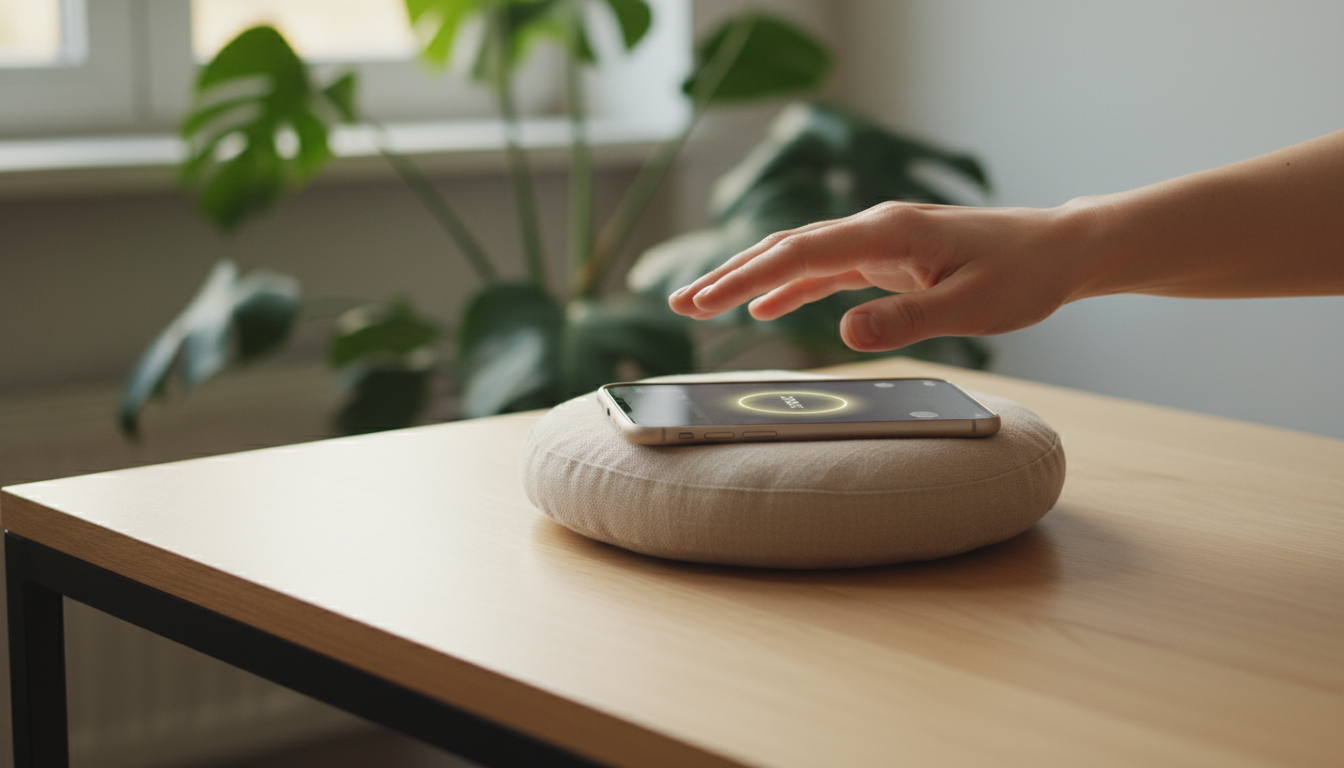
Identity-Based Habits: Becoming the Person You Want to Be
The second, and perhaps most powerful, concept is the idea of identity-based habits. Often when we try to change, we focus on the outcome: “I want to lose 10 pounds,” or “I want to be less stressed.” The problem with outcome-based goals is that they don’t give us a clear path for our daily actions. A more powerful approach is to focus on the type of person you want to become.
Instead of thinking, “I want to start meditating,” you reframe it as, “I want to be a person who is calm and mindful.” This seems like a small change, but it’s profound. Your goal is no longer about hitting a certain number of meditation minutes; it’s about embodying a new identity. How do you do that? With small wins. Every time you perform your new habit, no matter how small, you are casting a vote for that new identity.
When you take just one conscious breath in a moment of stress, you are acting like a mindful person. When you sit for two minutes in the morning, you are reinforcing the identity of someone who prioritizes their mental clarity. Each action is a piece of evidence that proves your new identity to yourself. Over time, you stop trying to do meditation and you start being a meditator. This internal shift is the ultimate secret to making a habit last a lifetime, long after the initial motivation has faded.

Designing Your Meditation Practice: The Architecture of Consistency
Now that we understand the “why” behind habits, we can move to the “how.” Building a durable meditation habit isn’t about finding the perfect technique or the most beautiful guided meditation app. It’s about smart design. It’s about creating a system that makes showing up so easy that it’s harder not to do it. We’ll focus on four key design principles: defining your minimum viable action, reducing friction, designing your environment, and adding gentle accountability.

Start with a Minimum Viable Action
One of the biggest mistakes we make when starting a new habit is aiming too high. We declare we’ll meditate for 20 minutes a day, and after a burst of initial enthusiasm, we miss one day. The 20-minute goal feels daunting, and we quickly fall off track. The solution is to define what we call a minimum viable action (MVA). This is the absolute smallest version of the habit that still counts. It should be so easy that you can’t say no.
What does this look like for a meditation habit? It’s not 20 minutes. It’s not even five. Your MVA might be:
- Taking one single, conscious, deep breath.
- Sitting on your cushion for 30 seconds.
- Turning on a meditation app and listening to the opening bell.
This sounds ridiculously small, and that’s the point. The goal in the beginning is not to achieve enlightenment; it’s to establish consistency. You are not building a meditation practice yet; you are building the habit of showing up for your meditation practice. By making the barrier to entry almost zero, you remove the possibility of excuses. You can always do your MVA, even on your busiest, most stressful day. You can always expand on it when you feel like it, but the MVA is your non-negotiable floor. This ensures you keep casting that vote for your new identity, day after day.
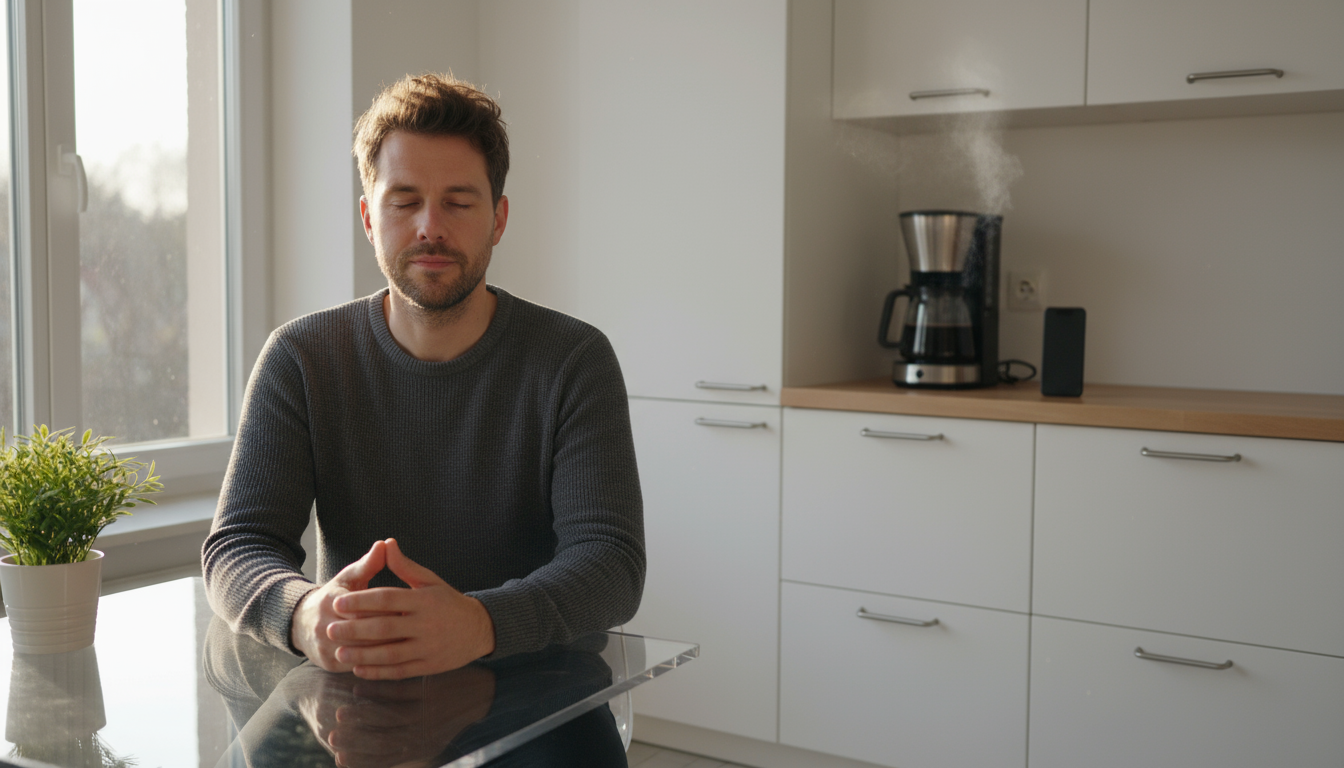
Conduct a Friction Audit
Friction is anything that stands between you and doing your habit. It’s the small obstacles and hassles that make the action more difficult. Our brains are wired to follow the path of least resistance, so even a tiny bit of friction can be enough to derail our best intentions. To make your meditation habit stick, you need to systematically remove friction.
Think about the steps required to meditate. Do you have to find your headphones? Is your meditation spot cluttered? Is your phone, with all its tempting distractions, right beside you? Each of these is a point of friction. A friction audit involves identifying these obstacles and eliminating them ahead of time.
- Decrease friction for your habit: Lay out your meditation cushion the night before. Create a dedicated, clean space for your practice. Bookmark a specific guided meditation so you don’t have to search for one. Charge your headphones and leave them by your chair.
- Increase friction for bad habits: If you tend to check your phone first thing, increase the friction. Leave it charging in another room overnight. Log out of social media apps. The harder it is to do the “wrong” thing, the easier it becomes to do the “right” one.

Design Your Cues and Environment
Remember the habit loop? The cue is the starting pistol. Instead of waiting for inspiration to strike, we need to be intentional about our cues. The most effective way to do this is through a technique called habit stacking. This means you anchor your new meditation habit to an existing, firmly established habit.
The formula is simple: After [CURRENT HABIT], I will [NEW HABIT].
- “After I brush my teeth in the morning, I will sit on my cushion for my MVA.”
- “After I pour my first cup of coffee, I will take three deep breaths.”
- “After I change out of my work clothes, I will meditate for two minutes.”
Your current habits are powerful cues because they are already hardwired into your brain. By linking meditation to them, you are piggybacking on established neural pathways. You also need to design your physical environment to make the cue obvious. If your cue is your morning coffee, place your meditation cushion right next to your coffee maker. Make your habit the next logical step in your routine. Your environment should be a constant, silent reminder of the person you are becoming.

Embrace Gentle Accountability
Accountability doesn’t have to mean having a drill sergeant yelling at you. It can be a gentle, supportive force. The simplest form is a habit tracker. Get a calendar and draw a big ‘X’ on each day you complete your MVA. The goal isn’t to build a perfect, unbroken chain. The goal is to see your progress visually. Watching the Xs accumulate provides its own satisfying reward and motivates you to keep going.
You could also tell a trusted, supportive friend about your goal. Don’t ask them to check up on you, but simply sharing your intention can make it feel more real and important. The key is to choose methods that feel encouraging, not punishing. The aim is to build yourself up, not to create another reason to feel bad if you have an off day.

Safeguarding Your Habit: How to Handle Inevitable Imperfection
Even with the best-designed system, there will be days when you miss. Life is unpredictable. You’ll get sick, you’ll travel, you’ll have a day so overwhelming that even your minimum viable action feels like too much. This is not failure. It is a normal, expected part of the process. The difference between people who build lasting habits and those who don’t is not that they never stumble; it’s that they know how to get back on track quickly and without shame.
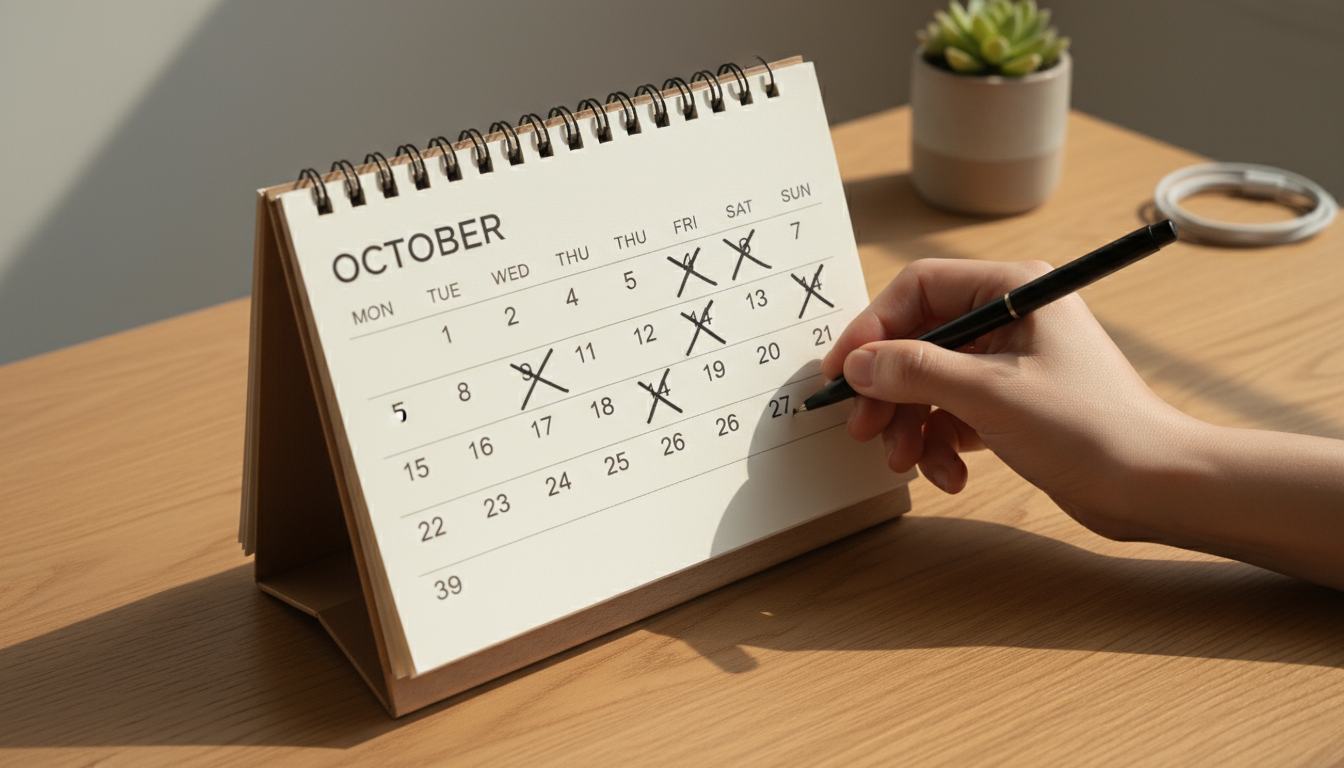
Plan for Relapse: The “If-Then” Strategy
The all-or-nothing mindset is the enemy of consistency. It’s the voice that says, “I missed a day, so I’ve ruined my streak. I might as well give up and start again next month.” We can fight this by planning for imperfection ahead of time. Create a simple “if-then” plan for when you miss a day.
If I miss my meditation practice for one day, then the next day my only goal is to complete my minimum viable action.
That’s it. You don’t need to do a longer session to “make up for it.” You don’t need to beat yourself up. You simply need to re-establish the pattern. Your goal is to get back to your baseline as quickly and painlessly as possible. This simple plan removes the drama and decision-making from a missed day, making it a minor blip instead of a catastrophic failure.
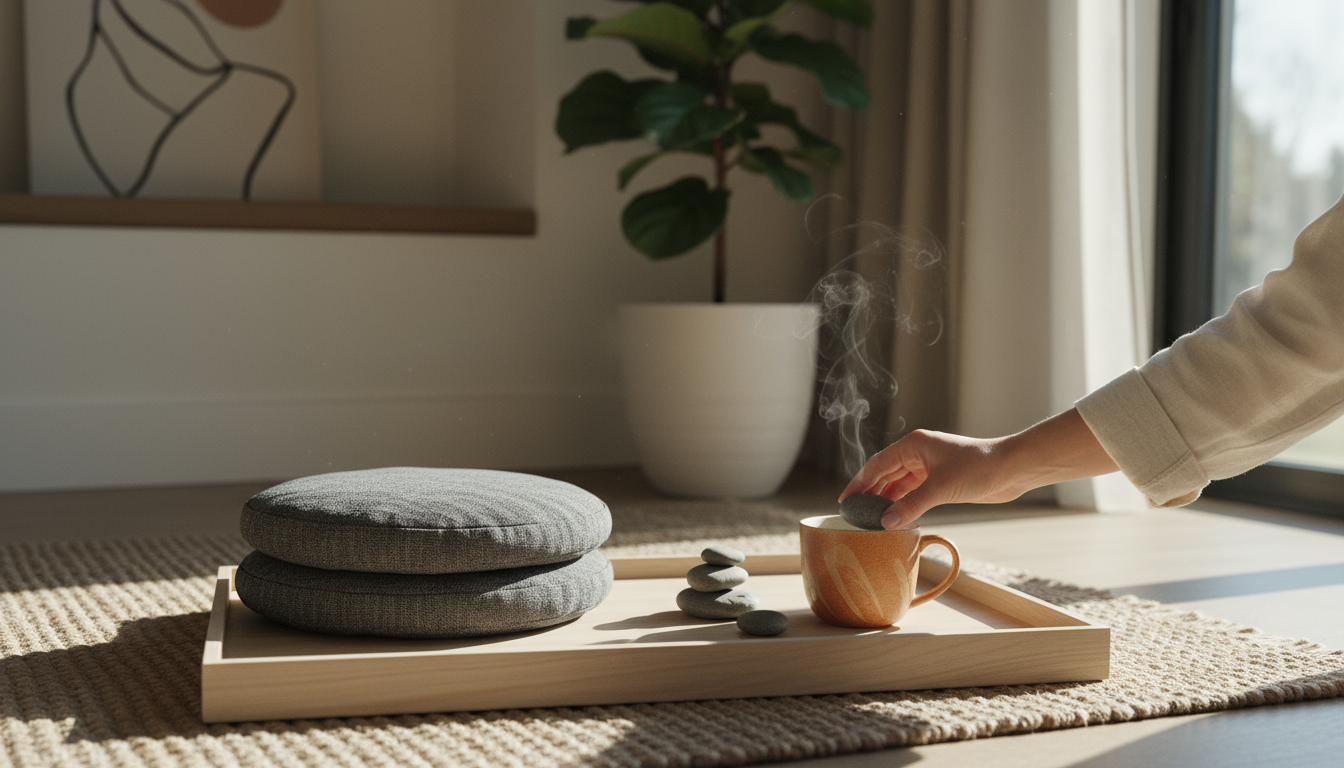
Rethink the Streak: The “Never Miss Twice” Rule
Streaks can be incredibly motivating. Seeing a long chain of completed days on a habit tracker can give you a powerful incentive to keep going. However, they have a dark side. When an inevitable life event breaks the streak, the feeling of loss can be so demotivating that it causes people to quit altogether. The pressure of maintaining a perfect record becomes a source of anxiety, which is the exact opposite of what we want from a meditation habit.
A healthier, more resilient approach is the “never miss twice” rule. One missed day is an accident. Two missed days is the beginning of a new, undesirable habit. This rule allows for the messiness of real life while still holding you to a standard of consistency. It reframes a missed day not as a failure but as a crucial moment to recommit. It shifts the focus from perfection to persistence, which is far more important for long-term success. As many researchers in the field of psychology have noted, consistency is more a function of recovery than of flawless execution. For more on the science of behavior, you can explore resources from organizations like the American Psychological Association.
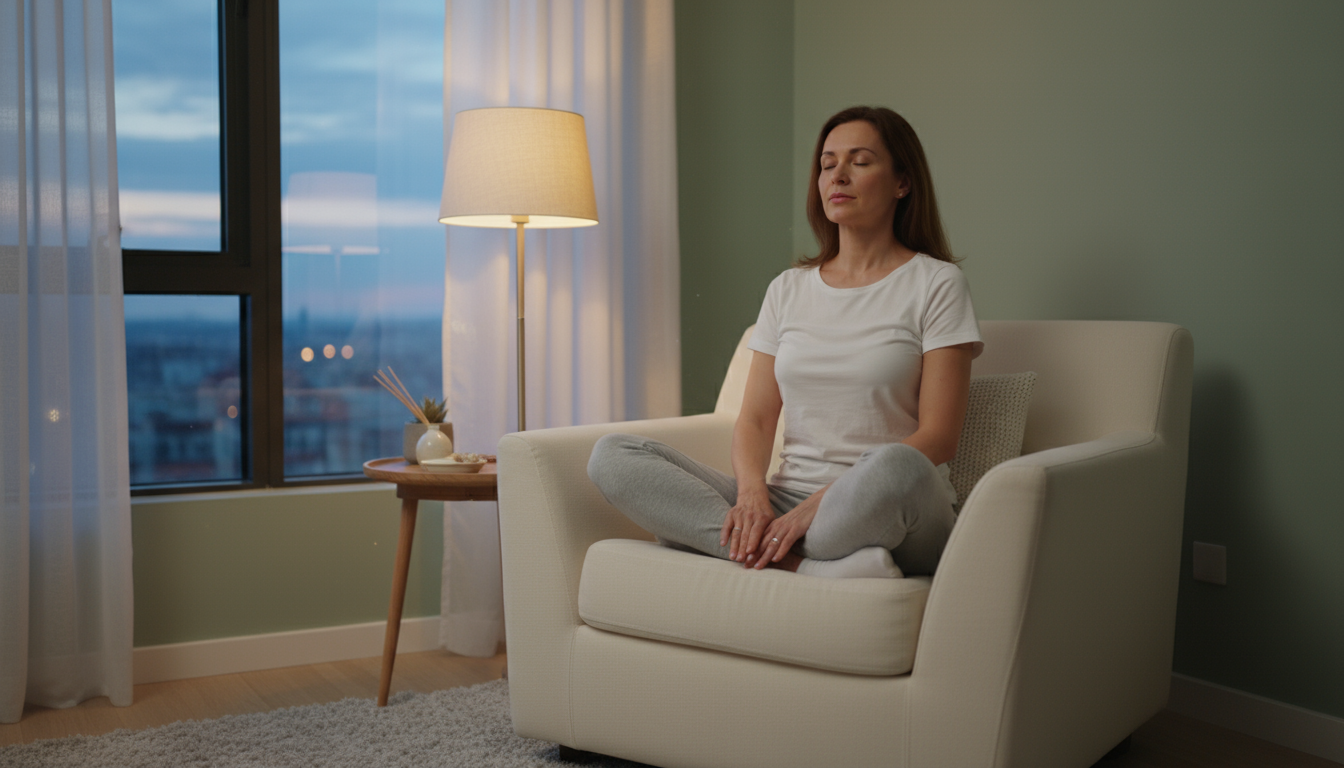
Reset Without Shame
This may be the most important safeguard of all. When you miss a day, your internal critic will likely show up. It will tell you that you’re not disciplined enough, that you’re not cut out for this. Your job is to meet that voice with self-compassion. Shame is a terrible long-term motivator. It paralyzes, it discourages, and it reinforces the very identity you’re trying to change (“I am someone who can’t stick to things”).
Instead, treat yourself as you would treat a good friend who is trying their best. Acknowledge that it was a hard day. Recognize that you are human. And then, gently guide your attention back to your plan: never miss twice. Tomorrow, you will simply do your MVA. Every moment is a new opportunity to begin again. The practice of meditation itself teaches us to notice our thoughts without judgment and gently return our focus to the breath. We must apply this same principle to the habit of meditating.

Putting It All Together: Two Sample Meditation Routines
Theory is helpful, but seeing these principles in action makes them real. Here are two simple, prose-based examples of how you could design a meditation habit into your life. Notice how each one includes a cue, a reduced-friction environment, a minimum viable action, and a clear reward.
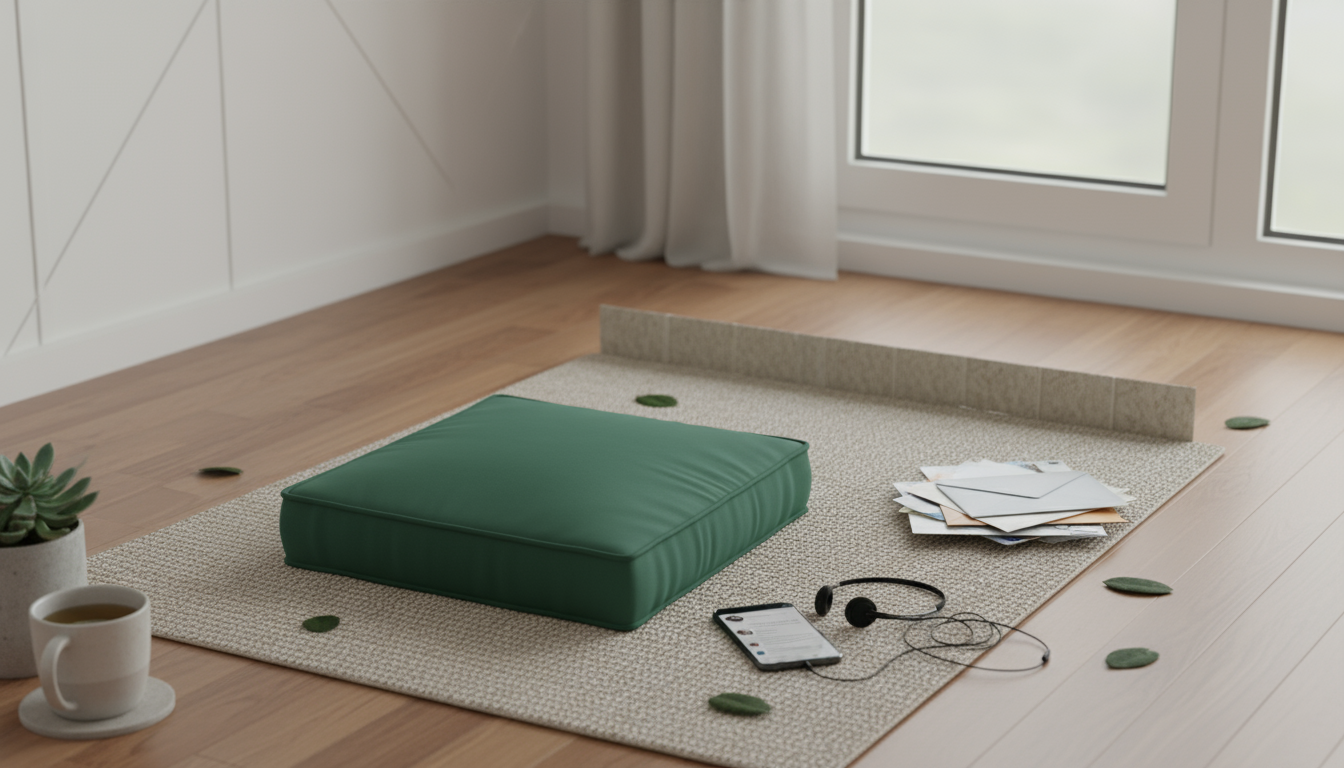
Example 1: The Evening Wind-Down
Sarah works in a fast-paced marketing job in the city and struggles to switch off her brain at night. Her goal is to create a moment of calm before bed. Her identity goal is to be “a person who can let go of the day’s stress.”
Her Routine Design: Her existing habit is brushing her teeth before bed. She decides to use habit stacking. Her new rule is: “After I finish brushing my teeth, I will walk to the armchair in my bedroom and meditate.” To reduce friction, she has created a dedicated space. The armchair is always clear, with a small, comfortable cushion on it. She makes a rule to leave her phone charging in the kitchen, increasing friction for mindless scrolling in bed. Her minimum viable action (MVA) is to simply sit in the chair and take three slow, deep breaths, feeling her feet on the floor. On most nights, she feels good after those three breaths and decides to continue for a few more minutes, listening to a short guided meditation. But even on nights when she is exhausted, she always does her three breaths. The immediate reward is the physical sensation of her shoulders dropping and her jaw unclamping—a tangible release of tension that helps her sleep better.

Example 2: The Morning Focus Primer
David is a freelance writer who finds it difficult to start his workday without first getting lost in emails and news headlines. His goal is to begin his day with intention and clarity. His identity goal is to be “a writer who is focused and present in his work.”
His Routine Design: His most ingrained morning habit is making coffee. His habit stack is: “While my coffee is brewing, I will sit at the kitchen table and do my focus practice.” This is the perfect cue because the five-minute brew time is a contained, predictable window. To reduce friction, he keeps his kitchen table clear of mail and other clutter. His phone remains on the counter, out of arm’s reach. His MVA is to close his eyes and focus on a single sense for 60 seconds. Sometimes he listens to the sounds of the house waking up; other times he focuses solely on the rich aroma of the brewing coffee. This tiny act of single-tasking is a powerful primer for the deep work he needs to do. The reward is twofold: first, the immediate feeling of being grounded, and second, the longer-term benefit he notices of being able to settle into his writing projects more quickly, with less procrastination.

Frequently Asked Questions About Building a Meditation Habit
As you begin this journey, questions will naturally arise. Here are answers to some of the most common ones, grounded in the gentle, realistic approach we’ve discussed.
How long does it really take to form a meditation habit?
You may have heard the popular myth that it takes 21 days to form a new habit. While it’s a nice, simple number, research shows it’s not accurate. Studies have found that the time it takes for a new behavior to become automatic can range from 18 days to as long as 254 days. The average is closer to 66 days. The key takeaway is that it varies wildly depending on the person, the complexity of the habit, and the consistency of the practice. Instead of fixating on a magic number, focus on the process. Concentrate on not missing twice and on casting a vote for your new identity each day. The habit will become automatic when it becomes automatic. Your job is simply to keep showing up.
What should I do on days when I’m traveling or sick?
This is where your minimum viable action (MVA) becomes your superpower. The beauty of an MVA like “take one conscious breath” is that you can do it anywhere, anytime. If you’re on a plane, you can do it in your seat. If you’re sick in bed, you can do it while lying down. On these disruptive days, your goal is not to have a perfect, serene meditation session. Your goal is to maintain the thread of consistency. By performing your MVA, you are reminding your brain that this is part of who you are, even when your routine is completely upended. This keeps the habit alive and makes it much easier to return to your regular practice once things are back to normal.
My mind is so busy and I feel like I’m failing. What can I do?
Welcome to the human experience! This is perhaps the most common misconception about meditation. The goal of meditation is not to stop your thoughts or to have a perfectly empty mind. That’s impossible. The goal is to notice your thoughts without getting swept away by them. The practice is in the gentle act of returning. Each time you notice your mind has wandered and you gently guide your attention back to your breath or your body, that is a moment of successful meditation. Think of it as a bicep curl for your attention muscle. The “failure” of getting distracted is actually the opportunity to practice. So, when you notice your busy mind, you can silently say “thinking” and, with self-compassion, return. You are doing it exactly right.
I’ve been consistent for a while, but I feel like I’ve hit a plateau. How can I go deeper?
Plateaus are a normal part of any skill development. First, acknowledge the amazing work you’ve done to build a consistent practice. If you feel ready to go deeper, you can make a small, gentle adjustment. This could mean adding one minute to your session for a week. Or you could try a different style of meditation—if you’ve been doing a breath-focused practice, maybe try a loving-kindness meditation or a body scan. The key is to make only one small change at a time and see how it feels. Don’t overhaul your entire routine. Just as you started with a tiny action, you should grow your practice with tiny, sustainable increments. The journey of mindfulness is a marathon, not a sprint, and its benefits are often cumulative, supported by a wealth of research from institutions like the National Institutes of Health.
Is it a good idea to try to build other new habits at the same time?
While it’s tempting to overhaul your life all at once, it’s generally more effective to focus on one key habit at a time. As we’ve discussed, even a small habit requires mental energy to establish. By focusing all your design efforts on your meditation practice for the first 30 to 60 days, you give it the best possible chance to stick. Once your meditation habit starts to feel more automatic—meaning you do it without much internal debate or resistance—you can then use that success as a foundation. You can even use habit stacking to chain a new habit onto your now-established meditation practice, for example: “After I finish my meditation, I will write in my journal for one minute.” Build your habits one by one, like stacking stones, to create a stable and lasting structure.

Your First Month of Mindful Consistency
We’ve covered the science, the design, and the safeguards for building a meditation habit that sticks. We’ve debunked the myth of willpower and replaced it with a system of smart, compassionate design. The secret, as you now know, is not about trying harder. It’s about starting smaller, being kinder to yourself, and building a system that makes consistency feel effortless.
You don’t have to wait for the perfect moment to begin. You can start right now, with a single breath. The journey to becoming a calmer, more focused person doesn’t begin with a 30-minute meditation; it begins with the single vote you cast for that identity today.
Disclaimer: The information provided in this article is for educational and informational purposes only and is not intended as a substitute for advice from your physician or other qualified health care professional. Always seek the advice of your physician or other qualified health provider with any questions you may have regarding a medical condition.
Your Next Actions
Here is a simple plan to put these ideas into practice over the next few weeks. Don’t just read this; take one of these actions today.
1. In the Next 5 Minutes: Define Your MVA. Right now, decide on your minimum viable action. What is the smallest possible version of meditation that you can do every day? Will it be one deep breath? Sitting on a cushion for 30 seconds? Write it down on a sticky note and put it somewhere you’ll see it.
2. Tonight: Choose Your Cue and Reduce Friction. Look at your existing daily routine. What is a reliable habit you already have (like making coffee, brushing your teeth, or turning off your computer)? Decide to stack your MVA right after that cue. Then, prepare your environment. Set out the cushion, bookmark the meditation track, and do whatever you need to do to make tomorrow’s action as frictionless as possible.
3. For the Next 7 Days: Focus Only on Consistency. For one week, your only goal is to perform your MVA every single day. Do not worry about the quality of your meditation or the length of your session. Your only job is to show up and do the tiny thing. If you feel like doing more, that’s a bonus, but it is not the goal. The goal is to build the foundation of consistency.
4. For the Next 30 Days: Practice the “Never Miss Twice” Rule. As you continue, life will inevitably get in the way. When you miss a day, notice any feelings of guilt or shame, and then let them go. Remind yourself of the real rule: never miss twice. Recommit to your MVA the very next day. This is how you build a practice that is resilient enough to last a lifetime.






